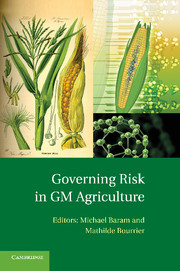Preface
Published online by Cambridge University Press: 01 March 2011
Summary
New technologies may provide a vast array of societal benefits but may also threaten established interests and values, and human and environmental well-being. Thus, modern democratic societies strive to address their potential, reduce uncertainties, exploit their benefits, and minimize risks by a variety of means. Such is the case with the introduction of perhaps the most challenging technology of all, biotechnology, which provides methods of genetic manipulation that are being introduced into the agricultural and food systems of nations across the globe.
This book aims to illuminate the issues and methods involved in addressing the uncertainties and risks of genetically modified (GM) agriculture. It therefore deals with the evolution of policies intended to ensure the safety of GM crops and food products, and the diverse regulatory approaches and other social controls they employ to protect human health, the environment, conventional farming and foods, and the interests and rights of consumers.
Discussion of the policies encompasses cultural, political, and economic forces that shape their design and application, as well as other contextual features such as the influence of multinational companies seeking acceptance of their GM ventures. This discussion also examines the influence of the dynamic public discourse that is fostered by progressive concepts of risk governance, and approaches taken to meet its demands for transparency, public participation, and appropriate consideration of public perceptions and values despite conflicting views of experts.
- Type
- Chapter
- Information
- Governing Risk in GM Agriculture , pp. vii - viiiPublisher: Cambridge University PressPrint publication year: 2010



